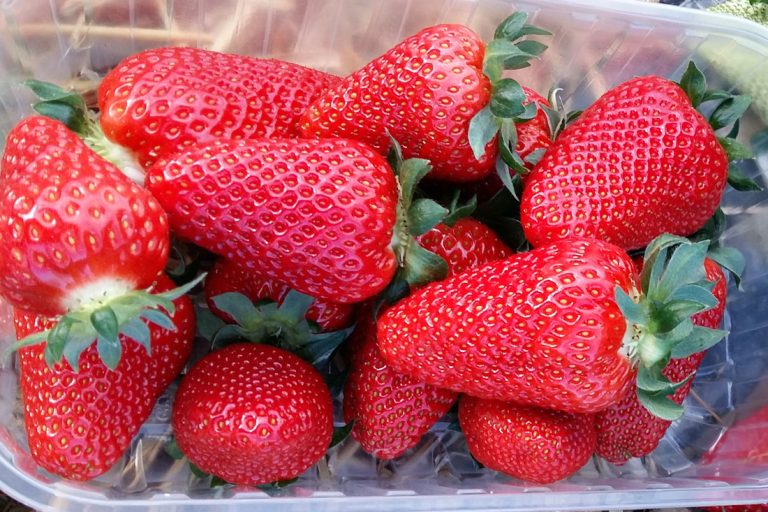Strawberry season begins in early summer. Whether you buy it or harvest it yourself, it pays to know these five ways to preserve the sweet fruit.
Strawberry season in Europe runs from the beginning of May to the end of August. During this time you can buy the red summer fruits everywhere – or harvest them yourself. Because strawberries only stay fresh for about two to three days in the fridge, it’s worth preserving them. That way you’ll have something of them for longer. In this article, we have summarized seven methods you can use to preserve strawberries.
Important: When buying strawberries, make sure that they are organic if possible. You support ecologically sustainable agriculture that does not use chemical-synthetic pesticides. This protects the environment and is better for your health.
Water and vinegar bath: this is how strawberries stay fresh longer

If you don’t necessarily want to process the strawberries further, but just want to preserve their freshness, then the so-called vinegar-water bath is suitable. That’s how it’s done:
For this method, first select all the strawberries that don’t already have any soft spots. Wash them off gently under cold water. Place them in a large enough bowl.
Fill the bowl one-third full with apple cider vinegar and two-thirds full with cold water. All of the strawberries should be covered by the vinegar and water mixture.
Leave the strawberries in the bowl for about 2 minutes. Then rinse it again under cold water.
Place the strawberries carefully on a clean tea towel or kitchen paper. Pat them as dry as possible, then let them sit until they’re completely dry. This step is important because damp or wet strawberries spoil more quickly.
Place another dry tea towel in as flat a container as possible. Place the strawberries on top. Check from time to time whether the cloth is still dry. If not, swap it out.
You can use this trick to extend the shelf life of strawberries by up to 10 days. This is because the vinegar will kill any germs and mold on the strawberries.
Freeze strawberries
Freezing is another way to preserve fresh strawberries. With this classic method, the aromatic fruits can be kept in the freezer for up to twelve months. In our guide, we explain step by step how to freeze strawberries.
Good to know: Thawed strawberries have a rather mushy consistency. Therefore, this method is particularly suitable if you want to use the frozen berries in a smoothie or if you want to heat them up after they have been thawed.
Boil strawberries
You can store unopened strawberries for up to two years.
Candied strawberries
Candiing fruit is a bit more time consuming. It is especially worthwhile if you want to preserve a large quantity of strawberries. However, candying is a good way to turn the berries into a delicious candy. Check out another article for detailed instructions on how to candy strawberries. Candied strawberries can be stored in an airtight jar for up to 12 months.
Preserve strawberries: the dry method

By processing the strawberries into crunchy strawberry chips, you extend their shelf life to up to twelve months. However, this method of preserving strawberries is quite energy-intensive. Like candying, it is only worthwhile if you want to process larger quantities.
How the dry method works:
Wash the strawberries and remove the stalk. Cut the fruit into slices.
Line a baking tray with parchment paper and sprinkle as evenly as possible with powdered sugar. Place the strawberry slices on top.
Dry the strawberries in the oven at 60 degrees top and bottom heat for four to five hours. Important: The oven door should not be completely closed. Using a wooden spoon, keep them slightly open.
Once all of the strawberry chips are nice and dry and crisp, you can take the tray out of the oven and let them cool.
Then carefully collect the strawberry chips from the tray and fill them into an airtight container.




